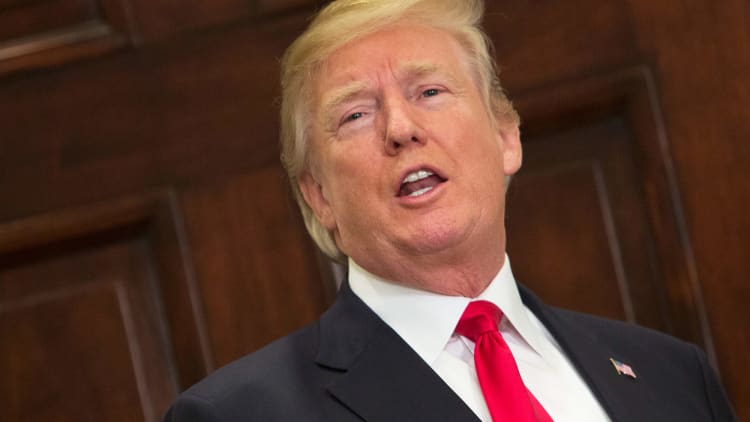
The White House unveiled its long-awaited infrastructure plan on Monday, fulfilling a signature campaign promise of President Donald Trump. The proposal includes $200 billion in federal infrastructure spending over a decade, which would be paid for through cuts elsewhere in the budget.
Read the full text of Trump's infrastructure plan here
The plan represents Trump's opening salvo in what is already shaping up to be a long and complex debate in Congress over how best to shore up the nation's infrastructure.
The largest single piece of the White House plan is a proposed $100 billion that would be made available to states and municipalities in the form of matching funds for infrastructure projects, according to White House officials who spoke to the press on background over the weekend. Federal funding, however, would be capped at 20 percent of the overall cost of any given project, leaving cities and states responsible for raising the other 80 percent.

Officials said the plan is designed to stimulate $1.5 trillion in new infrastructure investment, but they did not weigh in on how states and cities would raise the other eighty percent of the funds for new projects.
The proposal also includes $50 billion for rural infrastructure projects, which would be distributed to states in the form of block grants. Twenty billion would also be set aside to finance cutting-edge projects deemed too risky to qualify for traditional funding, but which have the potential to be transformative if they succeed. Another $20 billion would go to expanding current loan programs for public-private partnerships.
According to the White House, one particular financing program, known as TIFIA, leverages each dollar of federal money into an average of $40 from other sources. So by this rationale, an additional $20 billion for TIFIA financing programs would be expected to produce $800 billion in new infrastructure investment.
A second major piece of the plan involves reforms to the federal permitting process, aimed at cutting the amount of time it takes for infrastructure projects to gain approval. Under the White House plan, current environmental permitting rules would be "streamlined" -- to use the administration's term -- to accommodate a wide range of infrastructure projects.
Details of the plan have been circulating in Washington for weeks, and Democrats in Congress have already released an alternative infrastructure plan that calls for $1 trillion in federal spending, or five times what the Trump administration is proposing.
Over the weekend, White House officials emphasized that many of the objectives in Trump's plan enjoy wide bipartisan support -- the only sticking point is how to achieve them. Still, they acknowledged that at least 10 different committees in Congress will have jurisdiction over one or more pieces of the proposal, all but guaranteeing a lengthy legislative process.
Trump is scheduled to host both Democratic and Republican leaders at the White House on Wednesday to discuss the infrastructure proposal.


